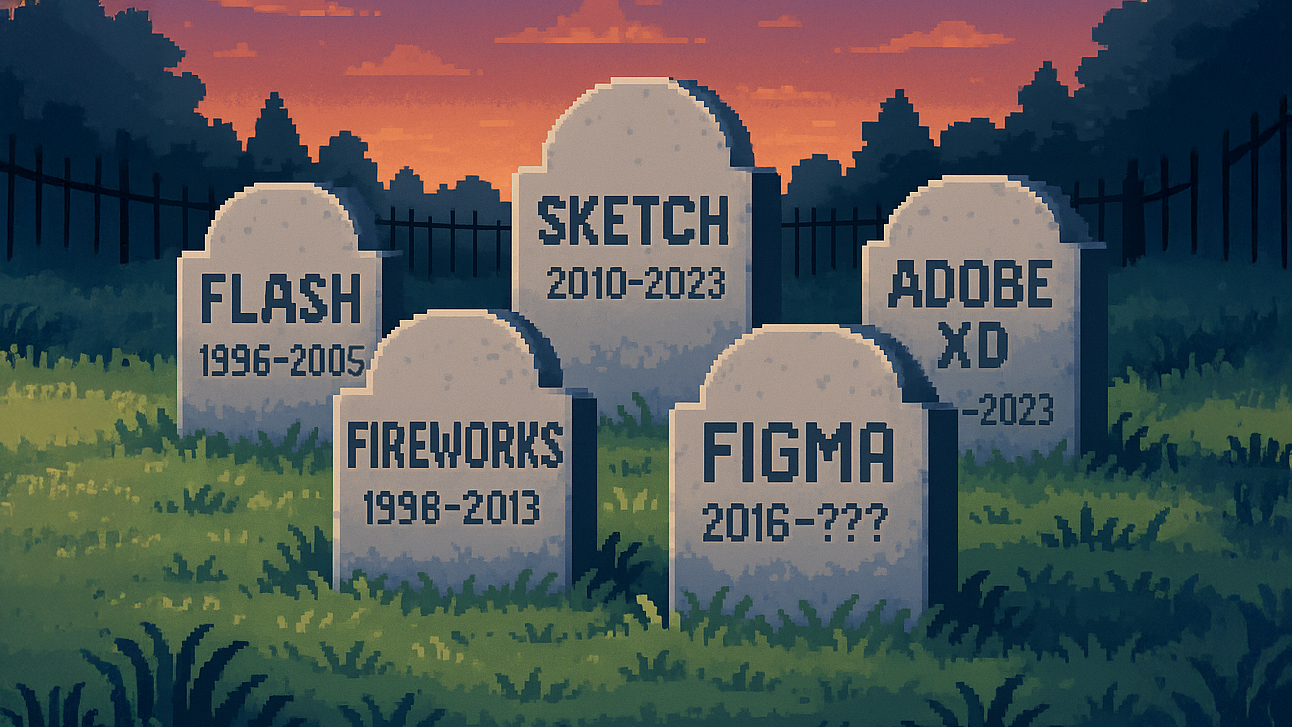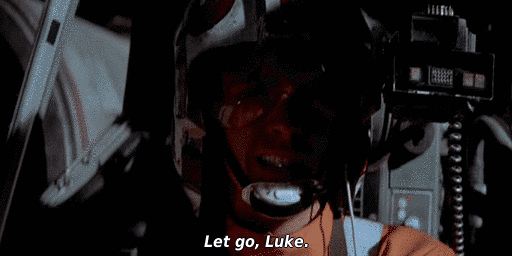Design Tools Are Dying. Long Live Design!
The design tool graveyard 🪦
When I started my design career in the early 2000s, I was obsessed with creating the design documentation. Beautiful wireframes, meticulous flows, complex prototypes, fully annotated edge cases—this was the craft. The artifacts were the work. They were how I proved my value to clients and colleagues.
But with time and experience, something shifted. I realized that, no matter how beautiful and detailed my design documents were, the actual users of the product would never see them. They didn’t care. They only cared about the value they got from the end product.
This mindset shift pushed me to start focusing less on the artifacts and more on the outcome. The best teams obsess over shrinking the time to value—not great documentation. I stopped treating wireframes and prototypes like sacred texts and started using them like a snapshot. A conversation. A means to an end. New mindset: how quickly & effectively can I explain this idea?
For well over a decade, I’ve operated from the belief that design's highest value lies in getting tangible experiences into the hands of actual users, fast. That shift moved me away from high-fidelity mockups and toward whiteboards, hand-drawn sketches, and collaboration sessions with my product and dev partners (even users) in the room.
Today, with AI accelerating the pace of what’s possible, that shift is coming for everyone… like a tsunami.
We’re not losing our jobs, we’re losing our tools.
A common fear is that AI tools are coming to replace designers. I don’t think that’s quite right—at least, not in orgs that actually understand what designers are capable of. Designers aren’t at risk of being replaced. But the design software? That’s another story.
Lately, I’ve been working quite a bit with advanced AI coding platforms, and I’ve come to the realization that—in the context of time to value—my communication skills matter more than my Figma (Sketch, Axure, Framer, Webflow, etc.) skills.
When a designer can provide their coding partner (human or otherwise) with clear requirements, success criteria, a style guide, assets, and some art direction, their partner has what they need to ship the product. Not a mockup. The real thing. What’s the point of spending hours & hours making pictures of software when we can cut to the chase and make the actual software in much less time?
Tools like Figma, Sketch, Framer, and Adobe XD were built for a different era. An era where detailed documentation, prototypes, and pixel-perfect mockups were the best proxy we had to communicate the desired experience to our stakeholders and partners. But proxies are no longer necessary when the real thing can be created in minutes with the right prompts.
And if the proxy is no longer needed—when the distance from concept to implementation shrinks to almost nothing—the need for these tools increasingly diminish.
But Testing!
I can already hear the protests: “But we need to use these tools to mock up and test ideas with our users!”
Prototyping tools were essential when getting interactive concepts into users’ hands meant days or even weeks of engineering effort. But that’s not the era we’re in anymore. When production-quality software can be generated, deployed, and iterated on in minutes—not days—there’s less need for disposable mockups or placeholder code. We’re no longer prototyping to avoid expensive mistakes; we’re prototyping to learn faster—and we now have faster, more capable methods to do exactly that.
This isn’t a loss. It’s a liberation.
I realize a lot of designers will read this and bristle. So many of us have tethered our professional identities to the mastery of a tool. The point of this post isn’t to celebrate the death of design tools. It’s to embrace the opportunity in front of us and embrace a new way of working.
Because what’s becoming obsolete isn’t design itself—it’s the baggage we’ve accumulated around how design should be done.
Like it or not, we’re blasting into a new phase. One where design is no longer bound by static outputs or over-defined handoff processes. One where we can partner with AI not just to visualize ideas, but to deliver them. One where the core value of a designer is not in their ability to manipulate design software, but in their ability to make sense of complexity, advocate for & listen to users, shape experiences, and guide products to life.
That’s the real work. It always has been.
The challenge now is to let go.
Real Designers use the Force – not targeting software
Let go of the idea that a tool makes you a designer.
Let go of the comfort that comes from owning a process.
Let go of the illusion that value lives in the deliverable.
The future of design isn’t about defending our role—it’s about redefining it.
The designers who thrive won’t be those who cling to their tools. They’ll be the ones who adapt, who collaborate, who direct, and who design with whatever new capabilities the moment demands.
Design will never die because it was never about the tool.

